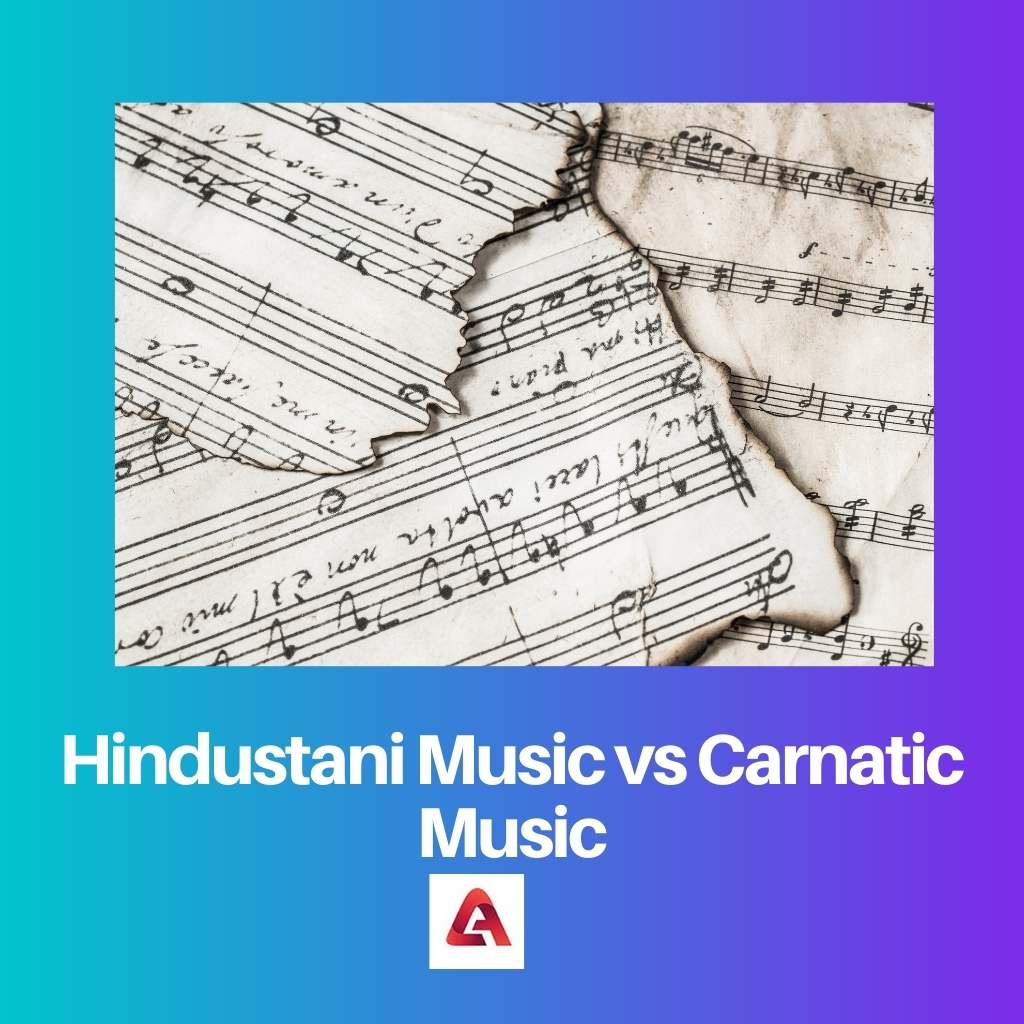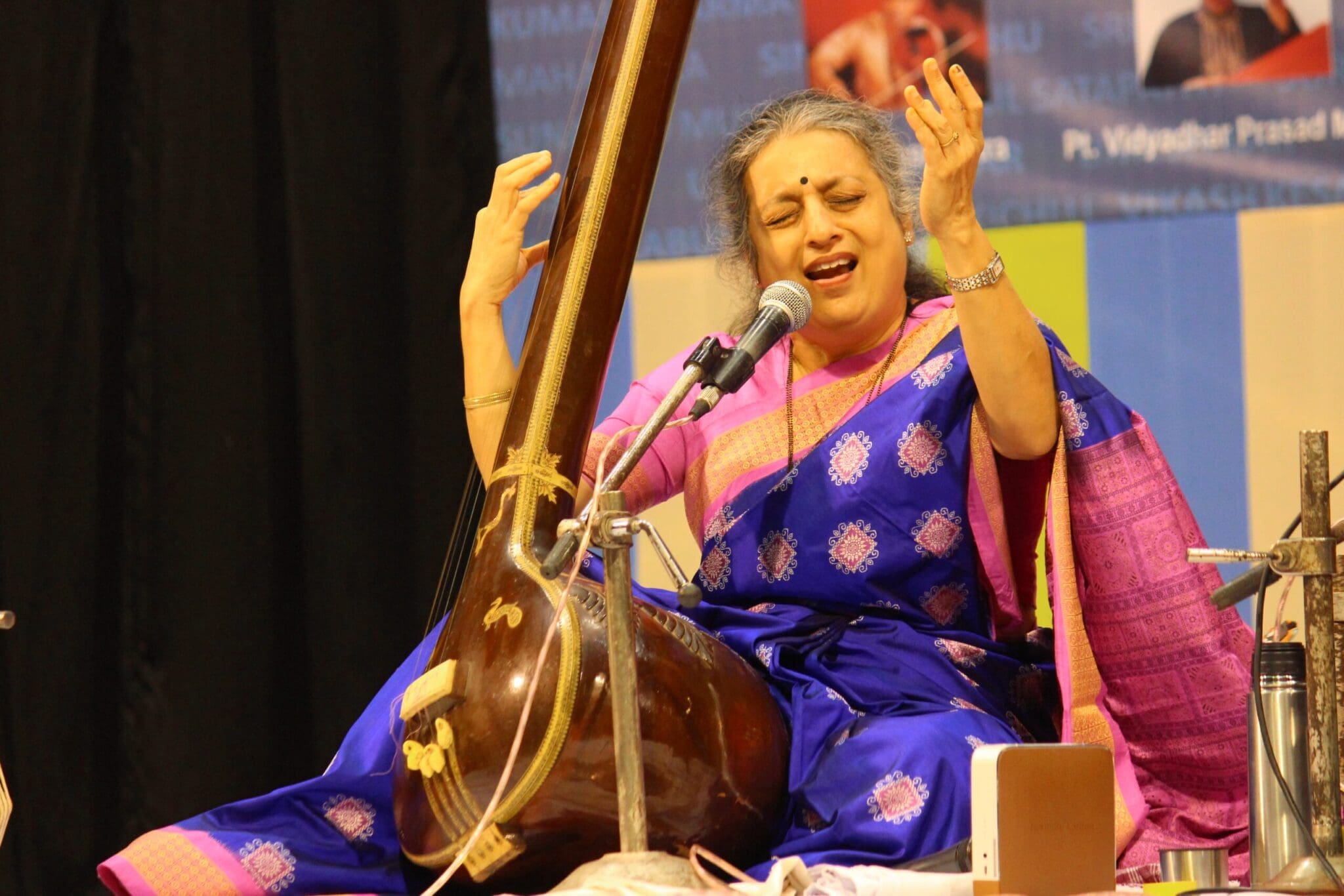Music will always be a good companion for us. There are different types of music available.
Hindustani and Carnatic are two different types of music. Both of them need focus and hard work to learn and master.
Key Takeaways
- Hindustani music originated in North India, while Carnatic music originated in South India.
- Hindustani music emphasizes improvisation and exploring ragas, while Carnatic music is more structured and focuses on compositions and intricate patterns.
- Hindustani music uses tabla and sarangi as main instruments, while Carnatic music uses mridangam and veena.
Hindustani Music vs Carnatic Music
The difference between Hindustani Music and Carnatic Music is their tunes. Hindustani music has only six rags, whereas Carnatic music has seventy-two rags. Hindustani has seven sub-styles in signing, but Carnatic has only one style in signing. In north India, Hindustani music got originated. In South India, Carnatic music got originated.

In northern regions, Hindustani is considered classical music. Northern classical music and Hindustani Kshatriya music are the other names of Hindustani music.
In the 12th century CE, Hindustani music originated in northern India. While looking at ragas, Hindustani has good improvement and exploration.
Hindustani is a melodic musical or raga that Tala can sing. Hindustani music has no method or concept of harmony.
During the period of Natya Shastra and Dattilam, the principles of Hindustani are improved.
In southern India, Carnatic music was originated. In South India, it is called Karnataka Samgita or Karnataka Sangitam. In Indian classical music, Carnatic music is one of the subgenres.
Vocal music is considered the major factor in Carnatic music. Carnatic music is performed in gayaki style.
Basic elements like sruti, Swara, tala, and raga will help to improve the composition and improvisation in Carnatic music, only by compositions.
Carnatic music is developed. It mainly uses the Kriti or kritinam.
Comparison Table
| Parameters of comparison | Hindustani Music | Carnatic Music |
|---|---|---|
| Origin | Hindustani originated in North India | Carnatic originated in South India |
| Indian tradition | Hindustani is heterogenous | Carnatic music is homogenous |
| Characters | Hindustani is secular | Carnatic is intellectual |
| Gharanas | Hindustani has many gharanas | Carnatic has no gharanas |
| Sub-style | Hindustani has seven sub-styles | Carnatic has only one sub-styles |
What is Hindustani Music?
In northern regions, Hindustani is considered classical music. Northern classical music and Hindustani Kshatriya music are the other names of Hindustani music.
In the 12th century CE, Hindustani music originated in northern India. While looking at ragas, Hindustani has good improvement and exploration.
Hindustani is a melodic musical or raga that Tala can sing. Hindustani music has no method or concept of harmony.
During the period of Natya Shastra and Dattilam, the principles of Hindustani are improved.
In the 16th century, music styles with gharanas emerged. It is used in many princely courts. Based on the notes, some gharanas were called thaats by Vishnu Narayan Bhathhande in 1900.
Sometimes it is a flawed system, but the gharanas make its heuristic.
In Mughal Empire, Northern India undergoes various cultural interchanges. During the ancient period, musicians have separate patronage and services.
The initial generation in music adopts new techniques from outside of India and improves the traditions and culture. They are helpful in spreading the kingdoms in many ways.
By the guru-shishya method, Hindustani music is imparted on a one-on-one basis. This method has both its pros and cons.
Raja Chakradhar Singh of Raigarh is the last king who patronises Hindustani singers in the modern era.

What is Carnatic Music?
In southern India, Carnatic music was originated. In South India, it is called Karnataka Samgita or Karnataka Sangitam. In Indian classical music, Carnatic music is one of the subgenres.
Vocal music is considered the major factor in Carnatic music. Carnatic music is performed in gayaki style. Basic elements like sruti, Swara, tala, and raga will help to improve the composition and improvisation in Carnatic music.
Only by compositions. Carnatic music is developed. It mainly uses the Kriti or kritinam.
Through compositions, Carnatic music is taught to the students. In the evolution of Carnatic music, the Telugu language has more significance.
Along with the Tamil language, few compositions have Telugu and Sanskrit incubations. Carnatic music is performed on the stage with a principal performer and a few background singers.
They use the tambura, Violin, venu, and other instruments. Chennai city is a big concentration of Carnatic music. Madras Music Season is one of the world’s largest music festivals.
Many Carnatic music festivals are conducted in Chennai.
There are many structures in the composing of Carnatic music. The Pallavi, Anupallavi, and Charana are the three basic units.
A song with these three is called keerthanam or kriti. In Indian music, notation is not a new concept. There is a growth and oral change in Carnatic music.
In the 17th and 18th centuries, written notation came into practice. Pundara Dasa played a significant role in the growth of Carnatic music.
He contributes many basic elements and basic lessons. In Swaravalis and Alankaras, he structured many exercises. He helped many beginners to learn Carnatic music.
Main Differences Between Hindustani Music and Carnatic Music
- Hindustani has seven sub-styles, and Carnatic has only one sub-styles.
- Hindustani has many gharanas, and Carnatic has no gharanas.
- In Indian tradition, Hindustani is secular, whereas Carnatic is intellectual.
- Hindustani is heterogeneous, whereas Carnatic music is homogenous in Indian tradition.
- Hindustani originated in North India, and Carnatic originated in South India.

The historical context provided for both Hindustani and Carnatic music offers valuable insights into the cultural and artistic heritage of these musical genres, contributing to a deeper appreciation of their distinct features.
The historical background provided for both Hindustani and Carnatic music adds depth to the understanding of these musical traditions. It’s fascinating to learn about their origins and evolution.
The comparison table is particularly helpful in summarizing the distinguishing features of Hindustani and Carnatic music, making it easier to grasp the key points of dissimilarity.
The article effectively underscores the fundamental elements and characteristics of Hindustani and Carnatic music, shedding light on their distinct compositional styles and performance traditions.
The article provides an insightful comparison of Hindustani and Carnatic music, highlighting their origins, characteristics, and key differences.
The emphasis on the development and evolution of both Hindustani and Carnatic music provides a comprehensive view of their cultural significance. It’s evident that both have contributed significantly to Indian classical music.
The detailed explanation of the main differences between Hindustani and Carnatic music is quite informative. It’s interesting to learn about the sub-styles and gharanas associated with each genre.
The mention of the unique influence of different languages and the significance of compositions in Carnatic music serves to highlight the richness and diversity of this musical tradition.